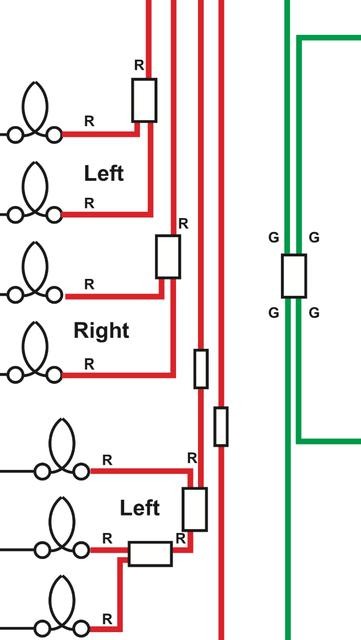Navigating the intricacies of your car’s electrical system can seem daunting, especially when faced with a complex wire diagram. These diagrams are essential tools for automotive repair and maintenance, acting as roadmaps for your vehicle’s circuits. However, understanding the symbols within the Wire Diagram Legend is the first crucial step to effectively using these schematics.
Many car enthusiasts, especially those working on classic cars like the MG MGB, encounter wiring diagrams from manufacturers like Advance Auto Wire. These diagrams, while comprehensive, rely on a specific set of symbols to represent various electrical components and connections. Deciphering these symbols, particularly for connectors and fuses, is key to tracing circuits and troubleshooting electrical issues.
Let’s break down some common symbols you might find in your car’s wire diagram legend, helping you move from confusion to clarity.
Understanding Connector Symbols
Connectors are fundamental in automotive wiring, allowing for modularity and easier assembly and disassembly of electrical systems. Wire diagrams use specific symbols to represent different types of connectors.
Bullet Connectors: The Rectangles
If you see simple rectangles in your wire diagram legend, these most likely represent bullet connectors. Bullet connectors are a type of pin and socket connection, often found in older vehicles. They are named for their bullet-shaped male pin that inserts into a cylindrical female socket.
These rectangles can represent single connectors, indicating a single wire connection point, or double connectors, showing a connection where two wires meet. Recognizing this symbol is crucial for identifying points in your wiring harness where wires are joined using bullet connectors.
Multi-Pin Connector Blocks: Rectangles with an “X”
The rectangles with an “X” inside denote connections to multi-pin connector blocks. These symbols are not representing the entire connector block itself, but rather indicate that a specific wire connects to one pin within a larger multi-connector.
These multi-connectors are essential for consolidating multiple circuits into a single connection point, commonly used for components like turn signal switches, wiper motors, and other multi-functional units. When tracing wires, understanding this symbol helps you identify where a wire leads into a larger connector block, rather than just a simple in-line connection. This distinction is vital for accurately following circuits through complex wiring harnesses.
Fuse Symbols: Protecting Your Vehicle’s Circuits
Fuses are critical safety devices in your car’s electrical system, protecting components from overcurrent and potential damage. Wire diagrams clearly indicate fuse locations and types using specific symbols.
In-Line Fuses: Circles with a Connecting “X”
The symbol resembling a circle with a connecting “X” typically represents a fuse, specifically an in-line fuse. These fuses are designed to protect individual circuits and are often located directly within the wire run, rather than in a central fuse box.
In older vehicles, you might find several in-line fuses protecting various circuits. For example, in models like the MG MGB, in-line fuses can be found for circuits like the radio or other accessories, in addition to the main fuses in the fuse box. Recognizing this symbol is important for locating and checking fuses outside of the main fuse panel when troubleshooting electrical issues.
Conclusion: Mastering the Legend, Mastering Your Car’s Electrics
Understanding the wire diagram legend is not just about memorizing symbols; it’s about gaining the ability to effectively diagnose and repair your car’s electrical system. By learning to recognize symbols for connectors like bullet connectors and multi-pin blocks, as well as crucial protective components like fuses, you empower yourself to trace circuits, identify faults, and maintain your vehicle with confidence.
Whether you are working on a classic car restoration or simply performing routine maintenance, a solid grasp of wire diagram legends, including these key symbols, is an invaluable skill for any car enthusiast and DIY mechanic. With this knowledge, those intimidating wiring schematics become clear pathways to automotive electrical mastery.
